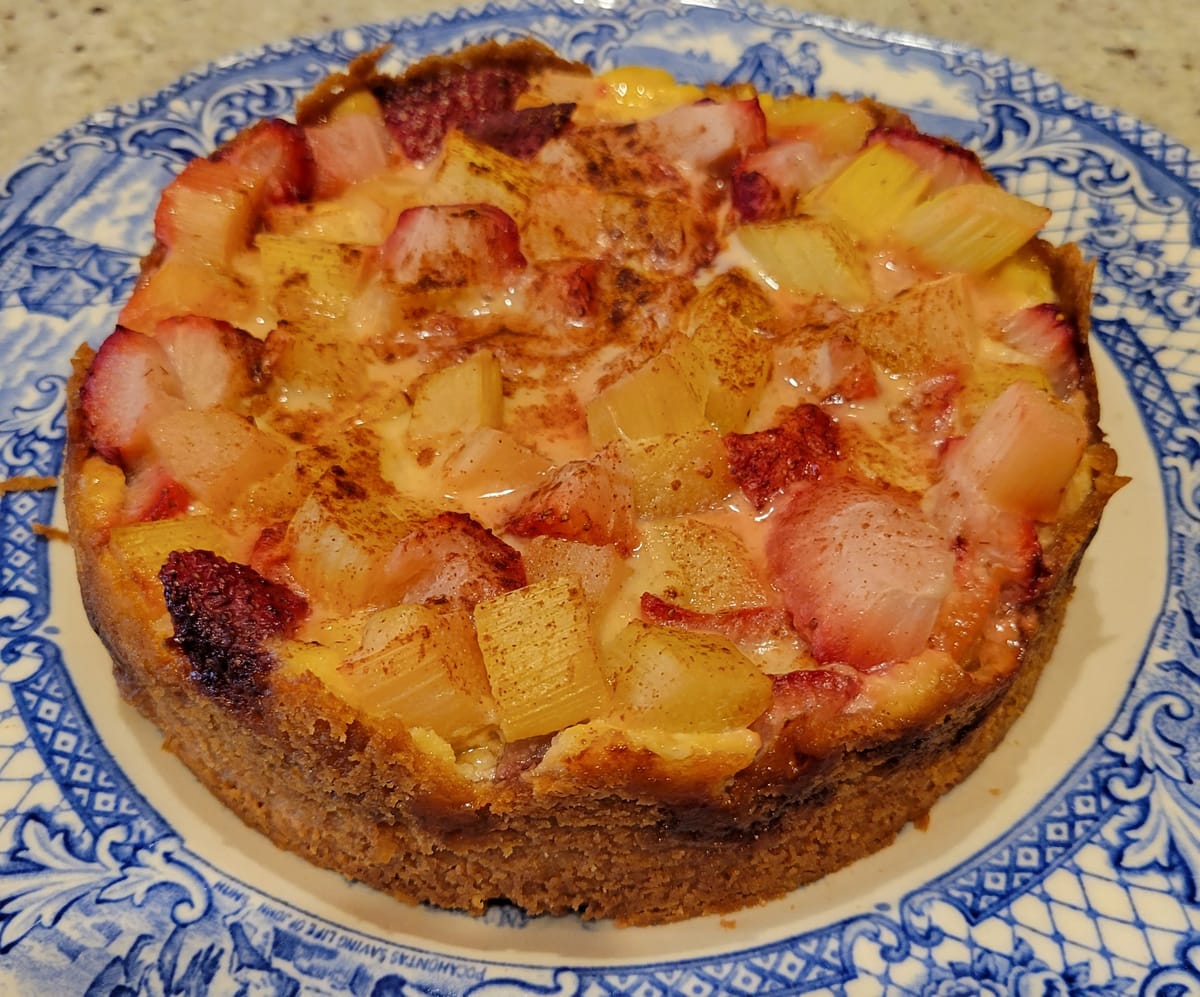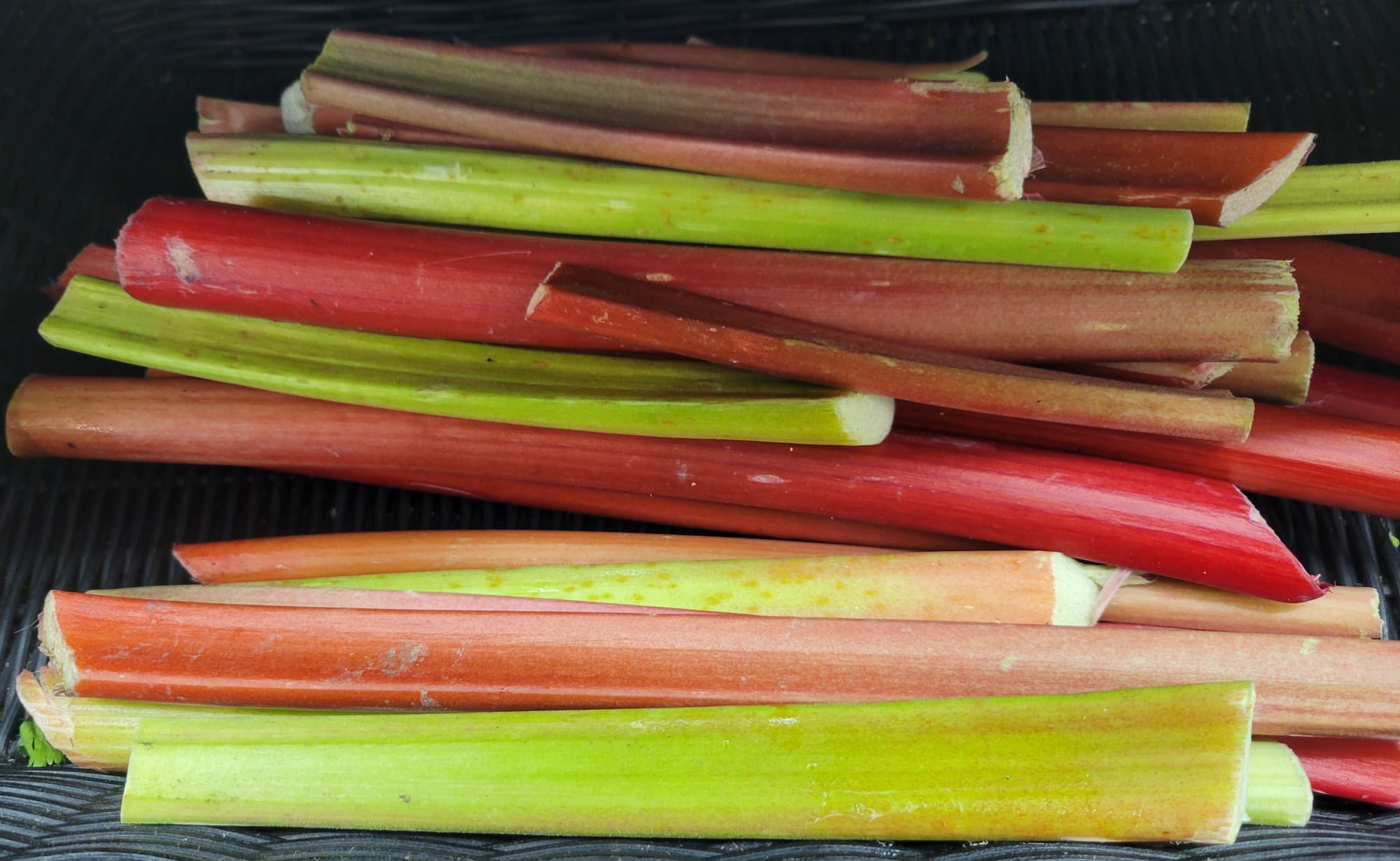On My Plate: Rhubarb
Rhubarb looks like and is categorized botanically as a vegetable, but its flavor blends well with fruits in baked goods like pies.

Rhubarb is one of the first fruits of our summer season. Botanically rhubarb is actually a vegetable, but it is treated in the kitchen like a fruit and makes for a classic spring pairing with strawberries.
In Oxford, our local rhubarb has appeared a week ahead of our local strawberries, so it gets my attention first.
The word “rhubarb” is a combination of the Ancient Greek “rha” and “barbarum.” Rha was the ancient Greek for the Volga River, along which rhubarb was known by the ancients to grow wild. “Barbaron” means foreign, the same origin as the English word barbarian. Some rhubarb historians believe the first syllable may actually derive from “rheo,” which is Greek for flow, a reference to its ancient use as a laxative.
Rhubarb was first used to describe a fight or argument in a 1943 broadcast by Hall-of-Fame Brooklyn Dodgers announcer Red Barber. Barber said that he got it from reporter Garry Schumacher, who got it from another reporter, who got it from a bartender who used it to describe a fight in his bar between a Giants fan and a Dodgers fan.
Growers in Yorkshire, England, had success growing rhubarb beginning around 1800. Into the twentieth century, an area of Yorkshire known as the Rhubarb Triangle grew 90% of the world’s forced rhubarb. Forced rhubarb plants spend two years in the field before being moved into sheds to continue growing in darkness through the second winter. The British consider the resulting rhubarb to be more tender than that grown entirely outdoors. The town of Wakefield, in the heart of Rhubarb Triangle, holds an annual rhubarb festival and has a 15-foot-tall sculpture of a rhubarb stalk.
Rhubarb is thought to have been introduced to the United States by a farmer in Maine around 1800. More than half of U.S. rhubarb production is in Pierce County, Washington, and the town of Sumner, 10 miles east of Tacoma, claims to be the rhubarb pie capital of the world.

Only the long fleshy stalks of the plant are edible. The large leaves are poisonous and must be trimmed away. Peeling is unnecessary but preferable for a smoother dessert. Cut one end of the stalk, but not quite all of the way through. Use your fingers to pull down the uncut end of the stalk to remove the outer strip of stringy fibers. Turn the stalk over, cut the other end of the stalk, and remove the outer strip of the other side.
If not all of the strips have come off, cut the stalk in half and repeat the process. Once all of the strips have been removed, cut the stalk into bite-sized pieces. This is also an opportunity to peel away any remaining outer strips.
Jean Vance, Oxford’s distinguished painter, and a friend and neighbor, gave me a photocopy of a vintage recipe card for rhubarb pie “from the kitchen of” Jean’s mother. The vintage recipe card handwriting was difficult for me to read, so Jean kindly walked me through the card’s shorthand. We clarified the ingredients and oven times and temperature, and Jean added some notes and comments.
Chop 3 cups of rhubarb (around 11 stalks), mix with 1 cup sugar and 3 tablespoons of flour, and place in a pie pan. Sprinkle bits of butter across the top, cover with foil and bake at 425 for 30 minutes. Remove the pan from the oven and discard the foil. Mix 1 egg, 1/4 cup sugar, 1 tablespoon flour and 1/2 cup milk, then pour over the rhubarb. The recipe notes say to use a three-tine fork to loosen the rhubarb so the custard mixes thoroughly with the rhubarb. Bake uncovered at 375 for 30 minutes.
For me, the balance between rhubarb and sugar in Jean’s mother’s made the pie a very good sweet treat.
James Rubenstein is president of the Board of Directors for the Oxford Free Press and professor emeritus of geography at Miami University.




